Continue ReadingThe Life Cycle of a Video Game: From Concept to Release
The post The Life Cycle of a Video Game: From Concept to Release appeared first on Mem Oriesof Mars.
]]>Planning
This is one of the most important stages in game development, as it ensures that the process starts on solid footing. By investing enough time and effort into careful planning, developers can enhance the likelihood of success and reduce potential problems as their project progresses. The stage consists of two principal phases:
- Game ideation: the backbone and arguably the hardest part of game development, which aims to determine the type of game developers are producing alongside its key features, characters, mechanics, target audience, and supported platforms.
- Proofing a concept: designed for analyzing all the generated ideas and defining how easy they are for a gaming studio to implement. Developers consider what budget and technological capabilities they need, how many people will be involved, what is the estimated timeframe for a launch, and how they will monetize the game.
Pre-Production
The pre-production stage is about laying the foundations for game production and brainstorming how to give life to the ideas generated during the planning process. This is where developers, artists, writers, designers, engineers, and project leads collaborate on a variety of game-related issues. At this stage, the team also produces game design documentation (GDD), which serves as a reference manual to keep thematic and visual consistency throughout development. The GDD covers:
- project goals
- level designs
- story world
- mechanics and gameplay
- music and audio
- user interface (UI)
- commercialization and marketing
Production
The production stage takes most of the effort, time, and resources. During the process:
- Character and NPC models are designed and animated to ensure they look exactly as intended.
- Sound designers work on in-game effects, from bloops and bleeps of menu navigation to leaky faucets and creaky floorboards under the feet.
- Level designers craft dynamic and immersive environments tailored to different playstyles.
- Writers take care of scripts, dialogues, item descriptions, and different copywriting tasks.
- Voice actors record lines of dialogues and game scripts.
- Developers come up with thousands of lines of code to bring each piece of game content to life and ensure the mechanics are working correctly.
- Team leads set project milestones and establish sprint schedules to keep each department accountable.

Testing
The testing phase is a massive part of game production, where the team checks each aspect of their product to make sure it has no technical glitches, bugs, softlocks, or exploits that may interfere with player experience. It’s important to note that the process is not linear but cyclic, meaning that it’s performed multiple times during the development cycle to detect and eliminate all gaming issues as soon as they appear. At the same time, the percentage of highly polished games varies based on their manufacturing scale. Hence, testing is a mandatory and well-funded step for AAA video games, while smaller projects may allocate fewer resources for this process due to budget constraints.
Pre-Launch
The pre-launch phase involves developing marketing strategies, setting up channels for game distribution, preparing a launch plan, and conducting beta testing. It creates all the buzz and excitement around the game, enhancing the chances for a successful release. Developers can also leverage independent advertising, like sponsored content and YouTube reviews, or showcase their product at global conventions to build a fan base and reach niche audiences.
Launch
Game launch is the most anticipated and nail-biting moment for its developers. Indeed, as soon as the title is released, players start “testing” it on the dedicated platforms, and their first reaction is of paramount importance for the future success of the game. Meanwhile, the marketing campaign continues to draw new players and generate more profits.
Post-Launch
Even when a game is already launched, there is still some work to be done to ensure its proper support. So, gaming companies listen to the players’ feedback, release patches with fixed bugs, and modify and update their titles to make them more appealing. Developers also enrich games with new features and provide downloadable content (DLC) to keep players active.
The post The Life Cycle of a Video Game: From Concept to Release appeared first on Mem Oriesof Mars.
]]>Continue ReadingTop Trends in the Video Game Industry: What’s Shaping the Future?
The post Top Trends in the Video Game Industry: What’s Shaping the Future? appeared first on Mem Oriesof Mars.
]]>Metaverse: Making Video Games Look Real
Video games are strongly dependent on technological progress. The video games integrated into the metaverse deliver a unique experience that reminds us of the real world. And this is exactly what players expect from developers. The metaverse consists of virtual worlds where players can communicate with each other and perform different activities.
According to the official report published by Ernst and Young, 97% of gaming companies rely on metaverse these days. They allow players to jump from one game to another with ease. To achieve this level of interoperability, developers create shared universes and cross-platform experiences. Here are the games that have already provided metaverse experiences:
- Axie Infinity;
- Alien Worlds;
- Decentraland, etc.
The metaverse manages to combine the digital and physical aspects in one place. Apart from playing games, users can also build their world, create new social dynamics, and choose the characters. What is the idea behind the metaverse? To combine the elements of the real and virtual worlds.
Blockchain: Quick Purchase during Gameplay
Blockchain has the power to revolutionize both gameplay and monetization. No wonder developers are constantly trying to engage this technology in games. The non-fungible tokens (NFTs) have gained massive use in the gaming industry. They help players purchase unique items, including skins, weapons, or characters. For more convenience, NFTs can be used on different game platforms, that accept decentralized payments. This way they help increase player engagement and revenues.
Blockchain integration is not as simple as it seems. Developers must navigate through various factors such as scalability, transaction charges, and regulatory protocols. Working with leading blockchain game development brands can mitigate these risks, allowing the technology to be implemented properly.
Many developers consider using blockchain technology. They should check whether their audience finds value in blockchain transparency and confidentiality. Games designed for the younger generation may not require blockchain elements due to their complexity. Older players can be interested in the blockchain perks like transparency and anonymity. Developers should match blockchain with the target audience to make the gaming content more relevant and accessible on different devices.
AI: Making Video Games More Responsive
The production of video gaming content has been transformed by artificial intelligence, which makes it easy to deliver more creative, engaging, and user-oriented gameplay. For example, NPCs have learned to replicate human actions. This way, AI creates a unique layer of realism that used to be unattainable.
AI offers many-sided content that can be put together for various creative purposes. When it comes to algorithmic content production, you can architect more complicated worlds without much involvement. In addition, AI-based analytics can deliver immediate reports about player behavioral habits, which can help specialists optimize play and increase retention rates.
Game development agencies that want to use AI should focus on making their products innovative but still clear for potential gamers. Individuals shouldn’t spend hours figuring out how to play. Modern AIs demonstrate great potential and have extensive expertise to fit the growing scale.
Monitoring the audience shouldn’t be ignored at this point. Casual gamers use AI to improve usability like instruction guides or adaptive mechanics. Hardcore gamers can benefit from AI opponents that deliver more challenges. Developers should understand AI’s capabilities for delivering the best performance and target audiences for approaching.
Redefining the Gaming Experience
Many modern technologies are becoming mainstream as the industry evolves. The rise of these technologies creates a challenge but also a chance for game developers to innovate. Keeping abreast of new trends is important to boost the gaming industry and reveal its full potential. The future of game development is possible by balancing metaverse experiences, AI-driven gameplay, or blockchain-based economies. VR and cloud services also contribute to online gaming. This is only the beginning of the journey.
The post Top Trends in the Video Game Industry: What’s Shaping the Future? appeared first on Mem Oriesof Mars.
]]>Continue ReadingTechnological Evolution in PC Gaming’s Future
The post Technological Evolution in PC Gaming’s Future appeared first on Mem Oriesof Mars.
]]>Hardware Advancements
Currently, two important areas in which hardware innovation is continually concentrated are graphics fidelity and computing power. A good example of recent advancement is real-time ray tracing, a technique for modeling light. Moving forward, quantum computing might revolutionize sophisticated simulations and visual rendering. Quantum bits (qubits) enable processing that is orders of magnitude quicker than the bits employed in today’s computers. However, the technology is still in its early stages, with significant obstacles to overcome before widespread adoption is achievable.
AI Integration
AI has previously found use in gaming, most notably in non-player character (NPC) behavior and procedural content production. Looking ahead, more intelligent, responsive, and dynamic NPCs might contribute to a more immersive and unexpected game experience. AI might also help to personalize experiences for individual players by assessing playstyles and modifying game dynamics as needed. This has the potential to make games significantly more entertaining, but there are ethical concerns to consider, particularly with data privacy.
Network Improvements
With the onset of 5G and the eventual development of 6G networks, the prospects for cloud gaming and game streaming services are promising. These advances could essentially eliminate the need for high-end hardware at the consumer end, as games could be rendered on powerful servers and then streamed. Moreover, these faster networks could facilitate more robust multiplayer experiences with lower latency.
While the proliferation of 5G and anticipation of 6G are generally seen as beneficial for cloud gaming and game streaming services, there are also challenges and considerations to bear in mind.
- Infrastructure: Widespread adoption of high-speed networks requires significant investment in infrastructure. This could result in a digital divide where only certain regions benefit from these advancements, leaving others at a disadvantage.
- Energy Consumption: High-speed networks and the server farms necessary for cloud gaming are energy-intensive. This raises concerns about sustainability and the environmental impact.
- Security and Privacy: Faster networks can also be susceptible to more sophisticated cyberattacks. Data privacy becomes even more critical when virtually all gameplay data is stored and processed in the cloud.
- Cost: While cloud gaming could potentially make high-end gaming more accessible, the costs associated with maintaining a high-speed, low-latency network connection could still act as a barrier for many consumers.
- Quality of Service: Despite technological improvements, issues like jitter and packet loss can still occur, impacting the quality of cloud gaming services. Game designers and network providers would need to collaborate closely to optimize the experience for end-users.
Virtual and Augmented Reality
Virtual Reality (VR) and Augmented Reality (AR) have the potential to revolutionize the gaming experience by creating more immersive environments. While both technologies are still in their infancy, with issues like motion sickness to solve, they offer novel ways of interaction and perception that could fundamentally alter how we experience games.
Social and Ethical Implications
Technological advancements will undoubtedly raise new ethical questions. The integration of AI into personalized gaming experiences could implicate privacy concerns, especially in how data is collected and used. Additionally, the democratization of access to high-quality gaming experiences through cloud services must be handled carefully to avoid potential monopolistic practices by large corporations.

The Metaverse
The concept of a “metaverse,” a shared, virtual space that is created by the convergence of virtually enhanced physical spaces and interactive digital spaces, is being touted as the next big thing in gaming. It could integrate elements of social media, e-commerce, and various other services into a unified experience. While the idea is still largely theoretical, it encapsulates many of the trends in both technology and society, from AI and VR to the increasing interconnectedness of different facets of our lives.
Concluding Thoughts
PC gaming’s future is a highly intricate tapestry woven from numerous technological threads. While advancements in hardware, AI, and networking offer unprecedented opportunities for richer and more interactive experiences, they also present challenges that must be addressed with both technological innovation and ethical consideration. The advent of technologies like quantum computing, VR, and AR might seem like quantum leaps, but they will arrive through incremental steps, each with their own sets of opportunities and dilemmas. Therefore, it is vital for stakeholders in the gaming industry to engage not just with the technological aspects, but also with the ethical implications of these innovations.
The post Technological Evolution in PC Gaming’s Future appeared first on Mem Oriesof Mars.
]]>Continue ReadingSkill vs. Chance: Comparing Strategy Elements in PC and Casino Games
The post Skill vs. Chance: Comparing Strategy Elements in PC and Casino Games appeared first on Mem Oriesof Mars.
]]>Skill-Based Elements in PC Games
In PC gaming, talent plays a prominent and multifaceted role. Cognitive and motor ability are examples of skills. Strategy games, for example, “Civilization” or “Starcraft” need long-term planning, resource management, and tactical expertise. First-person shooters such as “Call of Duty” need quick reactions and spatial awareness. In PC games, the mix of skill-based components is frequently deliberately engineered to give a gradual learning curve. As players devote more time, they gain demonstrable proficiency, making the game experience more gratifying.
The concept of talent in PC gaming is not uniform. varied games place varied emphasis on certain sorts of talents. Some jobs may call on logical reasoning and puzzle-solving skills, while others may value hand-eye coordination and rapid decision-making.
Chance-Based Elements in Casino Games
On the other hand, casino games are often designed with a significant element of chance. Games like roulette, craps, and slot machines are almost entirely luck-based. Even in games where skill plays a role, like blackjack or poker, the element of chance introduced by the shuffling of cards is a significant factor. The uncertainty generated by this randomness is a primary driver of excitement and engagement in casino games.
However, it’s worth noting that the role of chance in casino games is often mathematically quantified and rigorously managed to ensure a house edge. Unlike in PC games, where the challenge often stems from outperforming an AI or other players, the primary antagonist in a casino game is usually the inherent probabilistic nature of the game mechanics. The house edge ensures that, over a long enough period, the casino will almost always come out on top, thus creating a different kind of challenge for players.
Skill Versus Chance: A Numerical Perspective
One way to further elucidate the distinction between skill and chance in games is by quantifying these elements. A numerical perspective can help to:
- Risk-Reward Ratios: In casino games, mathematical models like expected value can quantify the risk and reward, offering insights into the role of chance. For instance, games like Fortune Tiger, available at tiger-fortune.org, often have well-defined payback percentages and odds that allow players to understand the level of chance involved.
- Skill Ceiling and Floor: In PC games, metrics such as “Elo ratings” in competitive multiplayer games can offer a quantitative measure of skill level, allowing for comparisons among players.
- Player Retention: Both PC and casino games often use analytics to measure player engagement and retention, which can indicate how well the game balances skill and chance to keep players involved.
- Legal Classifications: The degree to which a game is based on skill or chance can influence its legal status, with some jurisdictions using numerical thresholds to make this determination.
- Economic Impact: The balance of skill and chance can influence player spending, either through microtransactions in PC games or wagers in casino games. A quantitative analysis can help understand this dynamic.
Comparative Analysis: Complexity and Engagement
PC games often offer complex environments that allow for a rich tapestry of skills to be developed and deployed. This complexity often results in a deeper level of engagement, as players seek to master the various elements involved. In contrast, the simplicity and straightforwardness of most casino games make them easy to understand but offer less depth in terms of skill development. This doesn’t make casino games any less engaging, but the nature of the engagement is fundamentally different, often relying on the thrill of risk and reward.

Ethical Considerations
When discussing skill and chance in gaming, ethical considerations, particularly around the issue of gambling, cannot be overlooked. The infusion of chance-based mechanics in PC games, often through features like “loot boxes,” has raised concerns about the ethical implications of introducing gambling-like elements in skill-based environments. This blurring of boundaries poses questions about player exploitation and the appropriateness of such mechanisms, especially in games accessible to younger audiences.
Integration of Skill and Chance
Interestingly, there’s a growing trend to incorporate elements of both skill and chance in both domains. Modern casino games are starting to introduce skill-based bonuses, and as mentioned, PC games are increasingly incorporating chance-based loot boxes or random events. This blending of elements suggests that the dichotomy between skill and chance is not as rigid as it may initially appear and that there’s room for innovative crossover between the two categories.
Conclusion
While skill and chance serve as distinguishing features between PC and casino games, the lines are increasingly blurring. Both elements offer distinct avenues for engagement and excitement, but they also carry their unique ethical and design challenges. The future will likely see more integration of skill and chance across both platforms, requiring game designers and stakeholders to think critically about how these elements shape player experience and the ethical implications therein. The key takeaway is that skill and chance are not mutually exclusive but can coexist in complex ways to create diverse and engaging gaming experiences.
The post Skill vs. Chance: Comparing Strategy Elements in PC and Casino Games appeared first on Mem Oriesof Mars.
]]>Continue ReadingMethods of Storytelling in Game Design
The post Methods of Storytelling in Game Design appeared first on Mem Oriesof Mars.
]]>Linear Narratives
A linear narrative is the simplest and most straightforward way to tell a story in a video game. The player follows a pre-determined plot and characters, with little to no deviation from the main storyline. The player’s choices do not significantly impact the story, and the outcome is fixed.
Examples of linear narrative games include the early “Super Mario Bros.” games, where the player’s goal is to save Princess Peach from the clutches of Bowser. The story and levels progress in a linear fashion, with no major branching paths or choices for the player to make. The player simply advances from one level to the next until they reach the final boss battle.
Linear narratives are best suited for games where the focus is primarily on gameplay, such as action games or platformers, where the player’s attention is primarily on completing challenges and progressing through levels. They are also well-suited for games with a clear and straightforward plot, where the player’s role is simply to experience the story.
Interactive Storytelling
Interactive storytelling takes the basic concept of a linear narrative and expands upon it by allowing the player to make choices that impact the outcome of the story. These choices may be small, such as dialogue choices, or they may be more significant, such as choosing which path to take or which character to side with.
Examples of interactive storytelling games include “Telltale’s The Walking Dead,” where the player’s choices throughout the game determine the outcome of the story, and “Life is Strange,” where the player’s decisions shape the relationships and events that take place.
Interactive storytelling allows the player to become more involved in the story, but it also has its limitations. The player’s choices are often limited by the constraints of the story, and the player’s impact on the outcome can be limited. The overall plot and character arcs are still largely predetermined by the developer, so the player’s choices may feel limited or inconsequential. Additionally, interactive storytelling can be time-consuming and difficult to implement, as developers must create multiple branching paths and outcomes based on the player’s choices.
Player-Driven Narratives
Player-driven narratives offer a higher level of player agency, allowing the player to actively shape and determine the course of the story. In player-driven narratives, the player’s actions, choices, and decisions drive the story forward, with the outcome being largely determined by the player.
Examples of player-driven narratives include “Minecraft,” where the player creates their own world and story, and “Fallout 4,” where the player’s choices determine the outcome of the main quest as well as the side missions.
Player-driven narratives offer a unique level of player engagement and allow for a high degree of replayability, as the player can experience a different story each time they play the game. However, it can also be challenging for developers to balance player agency with a coherent and compelling story. If not handled correctly, the story can become disjointed and lack direction, leaving the player feeling disconnected from the narrative.
Emergent Storytelling
Emergent storytelling occurs when the player’s actions and decisions within the game world create unique and unexpected stories that develop organically over time. This type of storytelling is not pre-determined by the developer, but instead, emerges from the interactions of the player with the game world.
Examples of emergent storytelling include “The Sims,” where players create their own characters and shape their stories through their actions and interactions, and “Grand Theft Auto,” where the player’s actions and decisions within the open-world environment create unique and unexpected stories.
Emergent storytelling can lead to unexpected and surprising narratives that can add depth and richness to a game. However, it can also lead to chaotic and disjointed stories, particularly in games where player choice is not guided or limited in some way.
In conclusion, game developers have a range of methods at their disposal for crafting a compelling narrative in their games. Each method has its own strengths and weaknesses, and the right choice will depend on the goals of the game and the type of story the developer wants to tell. Whether it’s a linear narrative, interactive storytelling, player-driven narrative, or emergent storytelling, the key to success is to find the right balance between player engagement and a well-crafted story.
The post Methods of Storytelling in Game Design appeared first on Mem Oriesof Mars.
]]>Continue ReadingThe Impact of Video Games on Education
The post The Impact of Video Games on Education appeared first on Mem Oriesof Mars.
]]>Benefits of Video Games in Education
One of the primary benefits of video games in education is their ability to enhance motivation. By providing a fun and engaging learning experience, video games can help to increase student interest and involvement in a particular subject or topic. They can also help to break down traditional barriers to learning, making it easier for students to engage with complex topics and retain information over time.
In addition to enhancing motivation, video games can also improve problem-solving skills. Through engaging with game mechanics and solving puzzles, players can develop critical thinking skills, improve their ability to work through complex problems, and develop their decision-making abilities. These skills can then be applied to real-world problems, providing a valuable resource for students in a wide range of subjects and disciplines.
Another benefit of video games in education is their ability to increase creativity and innovation. By allowing students to experiment with different solutions and approaches to problems, video games can help to foster creative thinking and encourage students to take risks and explore new ideas. This can help to stimulate innovation and drive the development of new and exciting technologies, products, and solutions.
Video Games and Argumentative Essay Writing
Video games have been traditionally seen as a form of entertainment that has little to no educational value. However, recent studies have shown that video games can actually improve several skills, including essay writing according to Yahoo News.
One of the ways video games improve essay writing skills is by enhancing the player’s vocabulary. Many video games feature complex storylines and characters that require players to understand and use a wide range of vocabulary. This exposure to new words and phrases can help players expand their vocabulary and use it in their writing.
Another way video games improve essay writing skills is by improving the player’s critical thinking skills. Video games often require players to make quick decisions based on the information available to them, which can improve their problem-solving and decision-making skills. These skills are transferable to writing, where players can use their critical thinking skills to analyze and evaluate information, and use it to support their arguments.
In addition, video games can also improve a player’s attention to detail, which is an important aspect of writing. In many video games, players need to pay close attention to their surroundings and be able to identify subtle details in order to progress. This attention to detail can be applied to writing, where players need to pay close attention to grammar, spelling, and punctuation.
Overall, video games can be an effective tool in improving several skills, including essay writing. While they should not be seen as a replacement for traditional writing practices, they can be used as a complementary tool to enhance writing skills and make the learning process more enjoyable.
Criticisms of Video Games in Education
Despite these benefits, video games have also faced a great deal of criticism in the field of education. One of the primary criticisms is that video games can be addictive, leading to students spending excessive amounts of time playing games and neglecting other important activities such as studying and exercise. This can lead to negative impacts on physical and mental health, and can also reduce students’ ability to focus on other tasks and priorities.
Another criticism of video games in education is their potential for promoting violence. Some games contain graphic content that may be inappropriate for students, and can lead to the development of aggressive or antisocial behavior. Additionally, games that reward violence and aggression can desensitize students to the consequences of such behavior and may encourage them to engage in violent or harmful activities in real life.
Finally, video games have also been criticized for their impact on attention span. The fast-paced and interactive nature of many video games can make it difficult for students to focus on other tasks and may reduce their ability to concentrate on more traditional forms of learning such as reading and writing. This can have negative implications for students’ ability to learn and retain information, and may also reduce their ability to focus on tasks that require sustained attention and concentration.
Conclusion
In conclusion, video games have both positive and negative impacts on education. On the one hand, they can enhance motivation, improve problem-solving skills, and increase creativity and innovation. On the other hand, they can also be addictive, promote violence, and negatively impact attention span. As such, it is important for educators and parents to carefully consider the impact of video games on education, and to take steps to mitigate any negative effects. This may involve limiting the amount of time spent playing video games, carefully choosing games that are appropriate for students, and providing a balanced and well-rounded educational experience that includes a variety of learning activities and experiences.
The post The Impact of Video Games on Education appeared first on Mem Oriesof Mars.
]]>Continue ReadingHow game developers for online casinos adapt to the realities of modern gambling
The post How game developers for online casinos adapt to the realities of modern gambling appeared first on Mem Oriesof Mars.
]]>Challenges for developers
The gambling market is developing in parallel with other high tech sectors. There are plenty of challenges for online casino game developers:
- Functionality. More bonus features and unusual features make the product more attractive;
- protection. Software code should be protected from hacking and tampering the results in favor of intruders;
- graphics. Flat graphics are replaced by three-dimensional models, memorable animation and colorful special effects;
- theme. Developers of games for Best Online Casinos for Canadians no longer support the nostalgia of consumers for “one-armed bandits” – traditional characters are replaced by comic book characters, sports stars or fictional characters;
- innovation. Developers are increasingly turning to virtual reality and other technologies;
- universality. A player must have access to online casino games at any time from his PC or handheld device;
- socialization. People like to socialize, share problems and joys. Online casino players are no exception;
- competitive spirit. In order not to get bored with the game, it is necessary to bring in the spirit of competition. Players will strive to rank among the best and be proud of the skills gained;
- monetization. Any service should be paid, as the one who provided it, spent the effort to implement it.
This is not a complete list of the challenges facing online casino game developers. Developers study market trends, share experiences and strive to offer users an interesting product.
The main thing about developing gambling content
Having exclusive software on a gaming site is a great way to attract new users and retain an active audience.
Trends in creating exciting and profitable iGaming products:
- Cross-platform. In 2022, mobile activity rates reached 50.8%, exceeding desktop traffic for the first time.
- Virtual reality gaming. By 2023, VR industry turnover will grow by 77%.
- Free entertainment. Social content is becoming popular, with stakes implemented as a purchase of additional game features.
iGaming market trends: what to consider
The gambling business not only instantly adapts to global market changes, but also sets trends for the entire IT segment.
The most promising iGaming trends:
- Mobile. With the growth of mobile traffic in the industry, there is a Mobile First effect: content is first created for tablets and smartphones, and then adapted for desktop users.
- Virtual reality. The technology has found applications in the creation of slot games and in the betting business. According to IDC forecasts, by 2023 the VR industry turnover will grow by 77%.
- Support for cryptocurrencies. From 2021 digital transactions are supported by PayPal service. Visa, the largest banking system, also announced the development of a similar service.
- Social content. Products with a new system of monetization appeared: bets in games are presented as additional optional purchases.
Social casino as a new solution for gambling companies
Not so long ago, social casinos began to gain popularity. The product helps gamblers stay in the operator’s field of influence at all times by receiving newsletters that encourage them to return to the game. The tool is so effective that the G2E 2021 conference was devoted entirely to the topic.
AGS General Manager Brian Bennett said of social casinos:
“Game development is a hit-oriented business, and what you think should work doesn’t always work. There are three components to a successful social casino game: content, metagaming, and user engagement.”
Quality content, incentives to attract players, and player engagement through tournaments, missions, and memorable events make a social casino profitable and bring success to online casino game developers who keep up with the times.
Conclusion
Creating casino games is a business that has to make money. Tough competition and inflated user expectations are forcing online casino game developers to look for out-of-the-box solutions, invent and rearrange ready-made products to suit the fashions.
The post How game developers for online casinos adapt to the realities of modern gambling appeared first on Mem Oriesof Mars.
]]>Continue ReadingA brave new world: why big publishers are abandoning traditional video games
The post A brave new world: why big publishers are abandoning traditional video games appeared first on Mem Oriesof Mars.
]]>Speaking to reporters, Guimo explained that Ubisoft’s goal is for each purchaser of a notional Assassin’s Creed to experience as many adventures inside the game as they can carry.
“Our goal is to provide Unity gamers inside Odyssey,” Guimo said when asked if Ubisoft was going to develop small adventures. “You live in the world of the game and pursue the goals you want to achieve. You get a lot of Unity-inspired adventures.”
Of course, the CEO did not ignore the payback of giant games. Contrary to the opinion of some (mainly Russian-speaking) critics, the company’s products are selling well and the user base is constantly growing, which allows Ubisoft to make a profit in the long term. Longer project life cycle – more money. And also – the possibility of additional income through microtransactions. According to Guimo, the sums from the sale of loot boxes go to a good cause, namely the support of the user base, feeding it with updates.
“Our teams don’t stop after the game comes out. We have a large number of employees who continue to create content for gamers to stay in their beloved universes,” the Ubisoft executive explained. “The fact that some players are still buying stuff in these games gives our teams the opportunity to continue creating additional content.”
Thus, in a few succinct sentences, Yves Guillemot outlined Ubisoft’s policy for at least the next few years. The company has several successful service games (Assassin’s Creed Odyssey, The Division 2, Ghost Recon Wildlands), and formerly traditional series like Far Cry are actively changing and adjusting to the wishes of the general public. If you remember, in Far Cry 5 the developers made a step away from the traditional formula, working since the second part, and this is – just think about it – the year 2008.
In Far Cry 5 the gamers were thrown out into the huge open world like blind kittens, without any backstory. The character of “Five” was not a nephew to the villain. He didn’t come to the island by mistake. He is an avatar, an adventure dummy whose only job is to involve you in what’s happening on the map. You want – crush animals with a car. Want – do quests (the sea of them), or clear outposts. The previous games in the series – no matter how full of self-replicating Far Cry 4, or even strange Far Cry: Primal – worked according to a different scheme. They made you explore yourself, craft items, open towers, complete story and secondary missions – in short, they remained a flesh-and-blood traditional action game.
Far Cry 5 and, to a greater extent, Far Cry New Dawn operate on the concept that Ubisoft’s creative director Serge Hascoet told Le Monde a few years ago, namely, allowing players to create their own story. Outside of story scripts. In this concept, the game acts as a moderator, a kind of game master. She rolls the dice, sets the conditions, but as they dispose of their own player decides. It is his adventure. Or stories, if you follow the logic of Ubisoft and some other modern publishers.
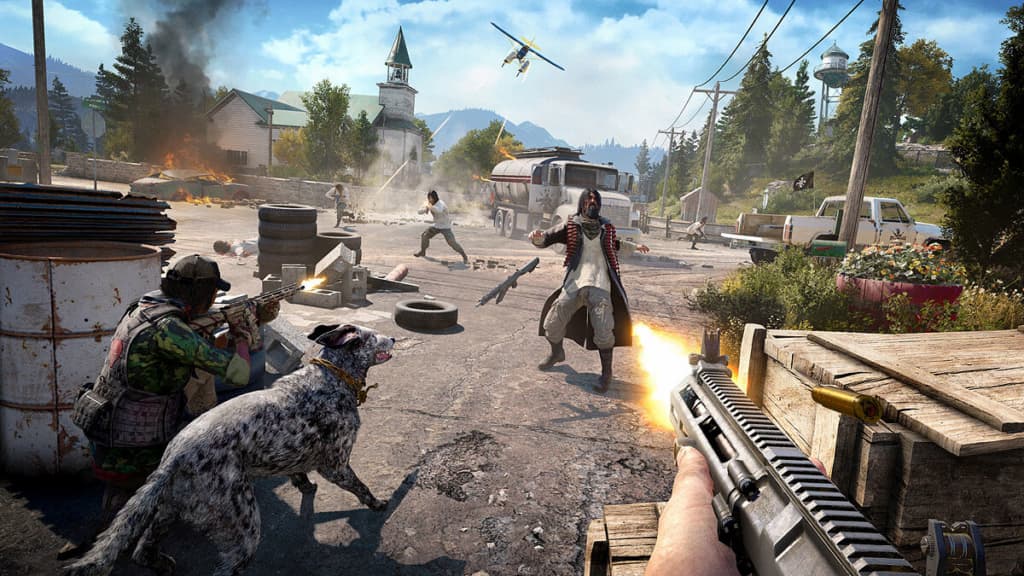
The fact that gamers (not all, but most) accepted the new rules so easily is not surprising. Leaving aside some of the features of game services (such as loot boxes), it turns out that there is little to get used to. Games that work under the scheme of constant content feeding have existed long before the mass internet, selling hats on Steam and gnomes sitting on the squares of MMORPGs with the inscription “Sell Yourself”.
A prime example of this approach is the Heroes of Might & Magic series, specifically its third and fourth parts. Developers and ordinary fans were constantly releasing addons, which added not only new maps, but also scenarios to the game. “Blade of Armageddon,” “Chronicles,” and “Whirlwinds of War” essentially replaced DLC in the modern sense of the term. And that’s just the tip of the iceberg. If you dig around, you can easily find another five projects to which you can cling the word “service” without hesitation.
Here at least Neverwinter Nights from Bioware. This RPG is entirely built on the activity of players who created the official editor for her so-called “modules. Modules not only extended the life of NN, but also created a huge community around it. Or The Elder Scrolls 3: Morrowind, which seems to be alive today thanks to the efforts of modders. Again, Diablo 2-3…
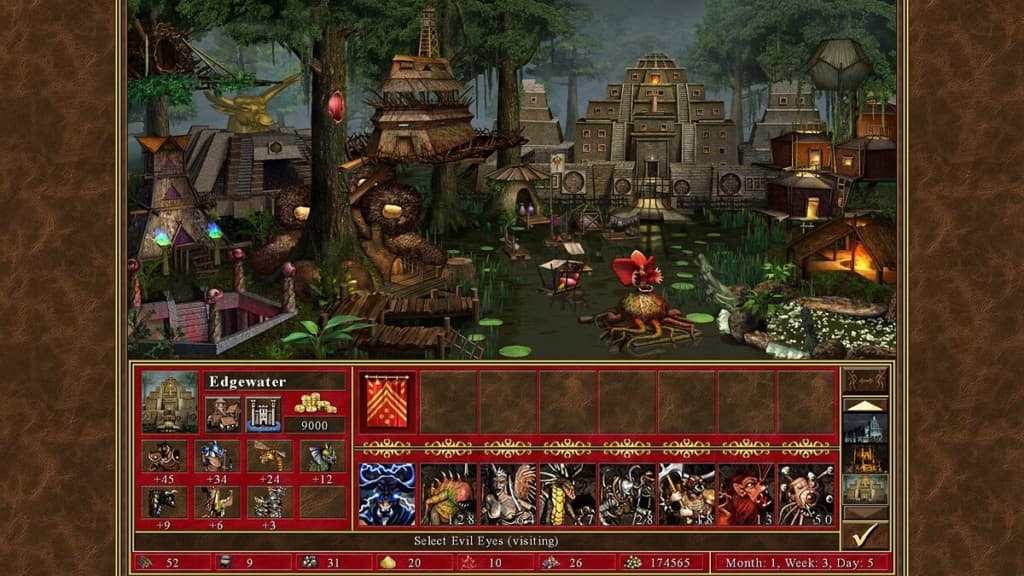
It’s important to understand that these games weren’t just services in terms of fueling content. They allowed gamers to build their own story – of course, within the conventions of the creators. For example, the author of these lines never passed Morrowind, although he lived in this part of the “Scrolls” for two years, studied the whole map and managed to be a vampire, an assassin, a thief and a mage.
And these are examples of when the quest with the “Blades” hangs at the level of “come to Balmora. Just read the thematic forums of those years or ask your friends who have ever been into role-playing games. The most interesting thing is that everyone surveyed will have their own story inside the conditional Morrowind or Neverwinter Nights. Someone will remember how he tried to find the cave on the information from the diary, the other – how he spent an hour collecting a special set of armor. The third – how to cast unique spells.
Game services, in fact, offer much the same, but at a technically more advanced level and – due to the low entry threshold – more accessible. They allow you to purchase new DLC with a click of the mouse, in which you will have even more adventures. Go deep into your favorite universe – just like in the olden days. In this regard, it is even strange that Guimo’s speech has caused such perplexity among the Russian-speaking gamers. Who better than them to look for a workaround in the Ore Valley, gather roots for the alchemist or lead a sheep through forests full of evil spirits. And that’s not to mention all sorts of MMORPGs ranging from World of Warcraft to Ultima Online and Lineage 2.
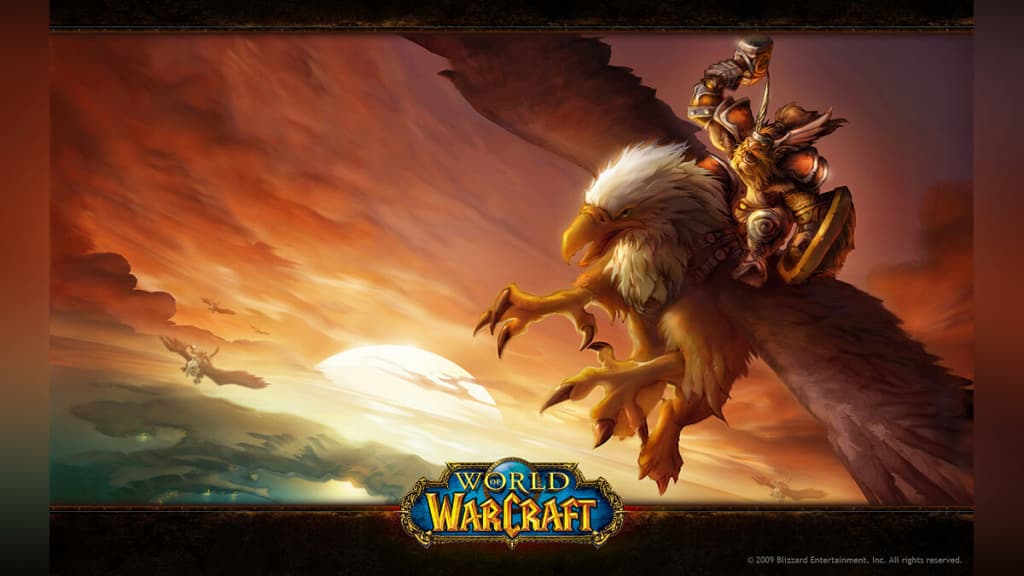
However, it would be a mistake to assume that the service games are entirely focused on the so-called “nerds. If this were true, their market share would remain at the minimum required to meet the demands of this category of players – relatively small in comparison to the industry as a whole.
In fact, the share of services is constantly growing. Why is this happening? In our opinion, it is due to the fact that the individual components of game services are suitable for a very diverse audience. In essence, we are dealing with a puff piece, with each part hitting a specific target. So who else are service games suitable for? Let’s list them one by one.

Generation Z: young guys and girls, who have replaced the classic millennials (aka generation Y). Often this category of gamers are not gamers at all. They can play one thing for years (PUBG, DOTA 2, WoW), have no interest in the industry and don’t even consider themselves fans of virtual entertainment. For them, games are a kind of social identity, working on the principle of “their own – alien. If you survive PUBG, you belong. No – well, you get the idea. For these people, games have no sacred meaning. They just don’t see them as something special. Something that outweighs traditional entertainment. Affordable and conventionally infinite service games are tight with this audience because they are the future.
Those who play occasionally: These are the people who don’t devote much time to video games. They’re not ready to learn the mechanics of the new Deus Ex, but they don’t mind running a match in FIFA from time to time, or a fight in the UFC. For them, service games are a breath of fresh air. An opportunity to try something new without bothering to study a well thought-out plot or too deep mechanics. Came home in the evening, shot rednecks in Far Cry 5 or mafiosi in Ghost Recon Wildlands and went to bed. By the way, these are the very people who buy cards in Electronic Arts’ Ultimate Team or pour money into loot boxes.

Those who are tired of mobile games: Of course, we are not talking about the audience of “three-in-a-row” projects. These are the people who are tired of the aggressive monetization of the mobile market and are looking for something new, but not too different from their usual entertainment. In this sense, game services are a great alternative. And also it is the second category of gamers who are ready to pay for boxes with loot. They are accustomed to it by the mobile market.
MMO fans who want something new: these people are looking towards game services that combine multiplayer and single-player campaign. For example, The Division 1-2, Destiny 1-2, Ghost Recon: Wildlands.
Mods: for them, digital entertainment is just a tribute to the times. They don’t take games seriously and are into them because everyone around them is talking about PUBG or Fortnite. Service games are a great candidate for purchase in this sense. Not only because of the specific gameplay, but also because of the hype they produce in the media space.
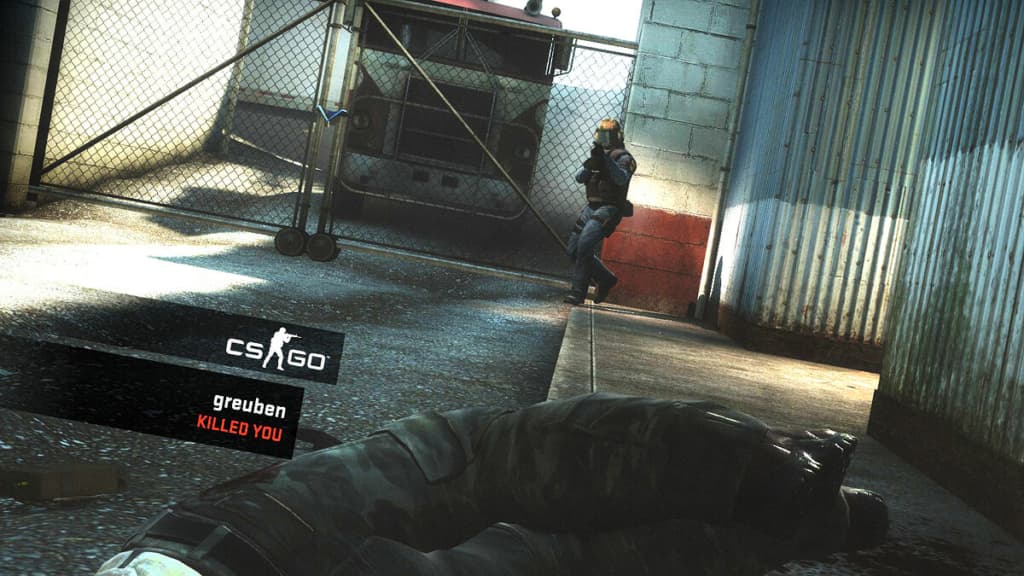
Thus, the popularity, the trend for games-services is just a consequence of working for the widest possible audience. Let’s be honest: the percentage of so-called hardcore gamers (those who are seriously into video games) is too small to cover the financial risks and bring profit to publishers and developers. The same cannot be said about those who are actively buying boxes in the new Far Cry or are right now making another run at The Division 2, buying players in FIFA 19, weapon skins in CS: GO or caps in Team Fortress 2.
With all that said, service games are not a genre at all (try comparing Diablo 3, The Division and some Call of Duty – nothing comes out). It’s about the very ideology of development. Publishers instead of art-house work of art as if offering customers a ticket to an amusement park with a dozen rides (activities) inside. And the players agree to these terms, because most of them do not need works of art at all.
That is why we should not be surprised by the growing popularity of service offerings from Ubisoft, EA, Activision or Bethesda. It’s simple: hardcore gamers are in the minority, and the majority vote with bells and whistles for theme parks because they fully satisfy their needs. Just as the majority go to blockbuster movies, ignoring the auteur cinema. The difference is that there is still a lot on the market right now to suit all tastes. What cannot be said, for example, about modern Hollywood. However, this is a whole other topic, which could be discussed endlessly.
The post A brave new world: why big publishers are abandoning traditional video games appeared first on Mem Oriesof Mars.
]]>Continue ReadingThe “Pearl” of Valorant
The post The “Pearl” of Valorant appeared first on Mem Oriesof Mars.
]]>Spatially existing in Lisbon, Lisbon District, Portugal, this haywire Map offers up two Spike Sites and is already included in the Competitive Que. As such, this map is unavoidable if you’re hoping to ascend the Ranks and plays a crucial role in Valorant account boosting as well. We all tend to run around like headless chickens whenever a new map comes out and this couldn’t be more true for Pearl. This beautiful battlefield was confusing AF to say the least, but following some getting used to players started to realize all the wild possibilities it presented for epic plays!

So without further ado, let’s take a short and sweet look at Pearl!
Pearl Layout
This unique Map is a network of numerous small corridors connected to both spawns and both sites. As such, mid-control proves to be of vital importance on Pearl and because of this utilities are far more game-changing here.
Pearl is special due to the absence of any dynamic elements or mechanics, unlike in the rest of the maps. But it does have something to fill the void: openings on structures scattered across the map.
The first is the Window on A Site, which paves the way for many plays by Attackers and Defenders alike.
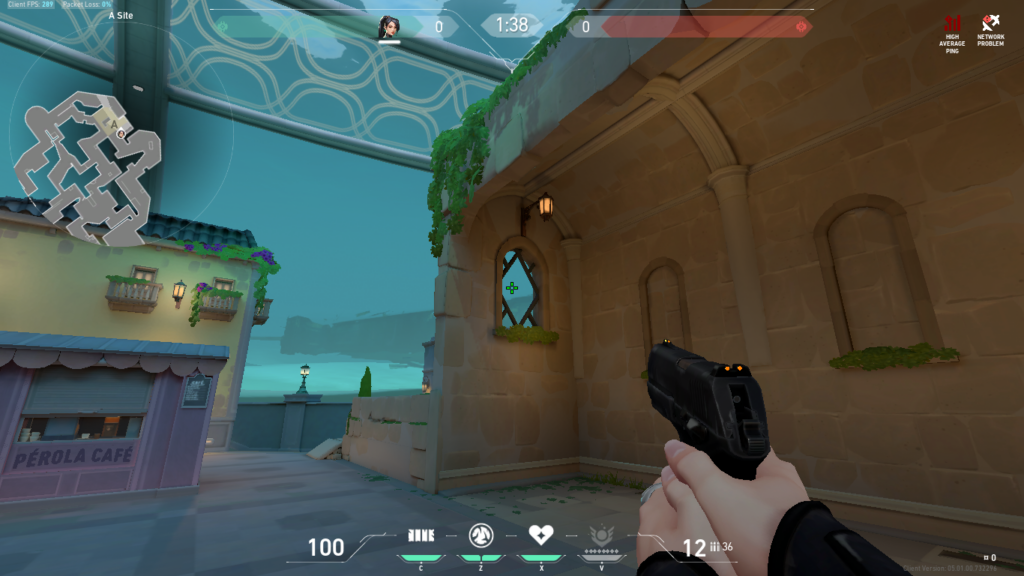
The second are the two Cracks on the Wall between Mid and A Long

These provide key opportunities for maximizing the use of your team’s utilities and for taking a few sneaky peeks. Why, it’s not impossible to secure kills through these either, like after a Jett Updraft. Players are discovering new possibilities everyday, so do not hesitate to experiment with these!
The A Site
Similar to another good ol’ map we all miss these days, Split, this site itself is quite defender sided, especially if you know what you’re doing. The counter-terrorists have three diffrent routes through which they can defend or retake the site, not to mention all the edgy corners they can hold. Attackers who aren’t careful will find themselves easily sandwiched in their desperate attempts to maintain site control.

As always, Early picks will benefit either team immensely. While the Defenders can choose to play Passive, the Attackers definitely need to go on the initiative if they don’t want all the odds stacked against them in record time. Post-plants work well for them though, especially if planted for A Long from where they can maintain adequate control (if not flanked, of course), use well-timed line ups and deny the plant.
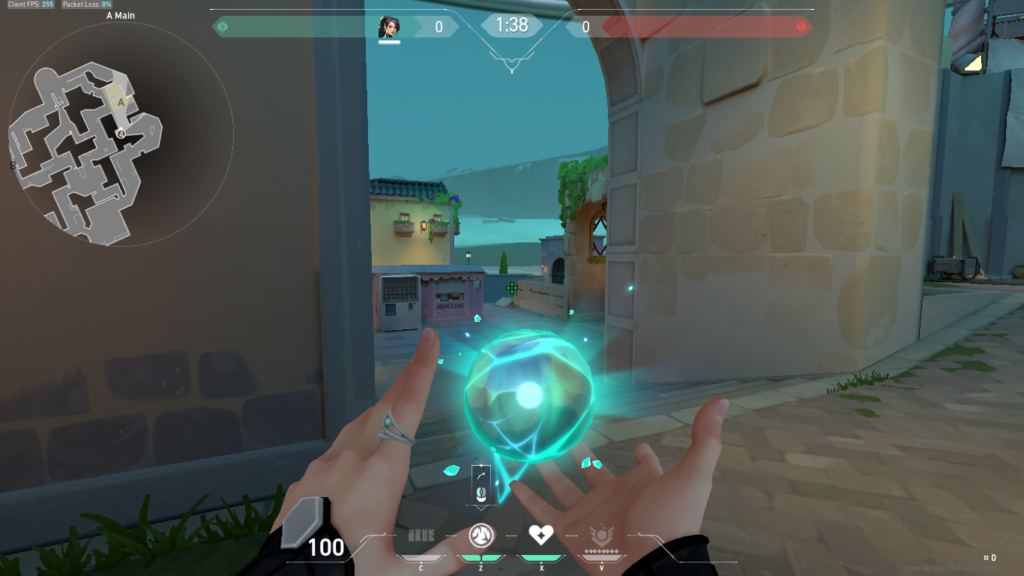
The B Site
If you love long-range Gun fights, B is your site! This is a very long, spacious and open area which can get easily dominated by long-range weapons, like the Operator and even the Marshal during eco-rounds. Defenders love holding this site with Operators, which gives them an uncanny advantage over early picks. Needless to say, Chamber with his Ultimate is right at home here.
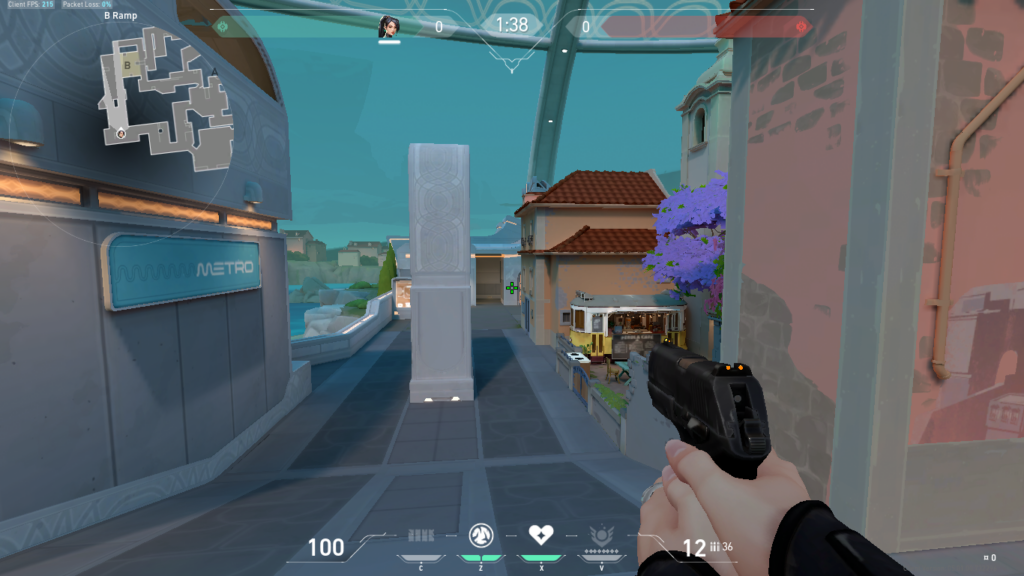
There’s more though; because the overhead B-Ramp also opens the field for some intense counter attacks for both the Attackers and the Defenders. It’s a great place to hold the site from, especially if you have an unobstructed view all around you.

As for post-plant strategies, Attackers can choose to largely remain on the Site itself, holding a number of its angles to guard against the two entryways for the Defenders. Don’t forget to leave one person at B-Main to watch the flank though, because it’s over if they get you from there. On the other hand, Attackers can plant for B-Main or B-Ramp, abandon the site and deny the diffuse from a safe distance.
Epilogue
Thus concludes this brief overview of the newest addition to Valorant’s Map family. Pearl is an absolute gem of a map, crawling with rich Lore, Easter eggs and References in every nook and cranny. Whether you’re a Lore enthusiast or not, Pearl opens up so many creative possibilities for every Agent released to date. So buckle up and prepare for an underwater experience of thrilling Gunplay!
The post The “Pearl” of Valorant appeared first on Mem Oriesof Mars.
]]>Continue ReadingValorant Fade Guide and Abilities
The post Valorant Fade Guide and Abilities appeared first on Mem Oriesof Mars.
]]>Powers and Abilities
What can Fade do? She was primarily developed as an alternative Agent to Sova, whose kit centers on reconnaissance and tracking tools. Her core mechanic involved the trails, which are capable of inflicting anxiety and fear in her opponents and ultimately led to her characteristic spooky nightmare theme. Let’s take a look at her skills below!
- Prowler
Fade’s first ability, set to the default key “C”, is her Prowlers. Pressing the key equips her nightmare-ish pets and pressing the mouse fires it forward in a straight line along her crosshair. Players can hold fire to steer the prowler using their crosshair towards the target location, but bear in mind she is completely vulnerable while doing so. This prowler will chase down the first enemy it comes into the vicinity of or follows the first terror trail it sees. Upon contact, it will near-sight the enemy with a rather terrifying animation and sound effect.
This ability has two charges, at 250 Creds each. Each prowler lasts for 3 seconds and has 100 HP each. Enemies get nearsighted for 3.5 seconds.

- Seize
The second ability is a Tether. Pressing the default key “Q” equips a knot of raw fear which can be thrown using the mouse fire. This knot will drop down after a set time or reuse the ability to drop it early. Rupturing upon impact, it will tether/hold all enemies within its radius and keep them there for 4.5 seconds. Foes caught will experience a 75 HP Decay, which will restore over the next 5 seconds, and also be deafened for the duration. Players will only get one Seize per round at 200 Creds.
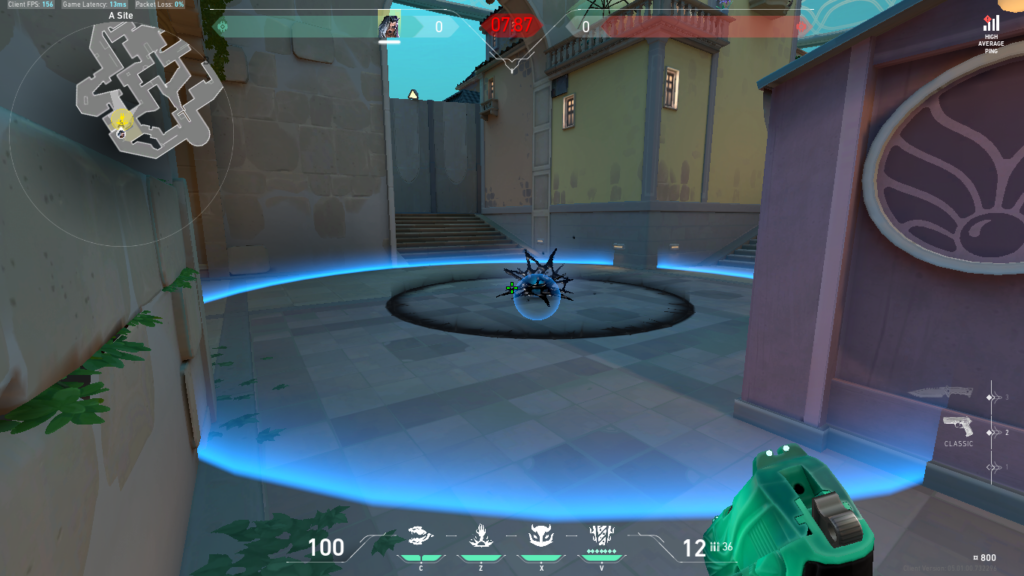
- Haunt
Fade’s Signature ability is Haunt, falling under the default key “E”. Pressing the key equips a nightmare-ish haunting watcher, which can be thrown using the fire button. This ominously cute pet would drop down after a set time or players can reuse the ability to drop it early. Lashing out on impact with a ear-rending sound, the Watcher would reveal all enemies within its line of sight and attach terror trails to them. This pet only had 1 HP, so enemies can quite easily destroy it if they are fast enough. The Watcher lasts for 2 seconds and has a cooldown of 40 seconds. The inflicted trails last for a whooping 12 seconds, but you only get one charge!

- Nightfall
Fade’s Ultimate ability is Nightfall, a true nightmare in the making. Pressing the default “X” key equips the power of Nightmare, Fade’s Radiant ability itself. Pressing the mouse fire unleashes a warped wave of unstoppable nightmare energy along the path and area indicated. All enemies caught within the wave’s AOE are marked by 12 second Terror Trails, get deafened and experience a 75 HP decay which restores over the next 12 seconds. This Ultimate costs 7 Orbs and is perfect for throwing your enemies into utter disarray.

- Terror Trail
What’s a fun Agent without a cool Passive? Fade is all about her Terror Trails, so whenever a foe is marked, both their position and movements are continuously revealed for that duration, tracked by an unholy dark mist. Prowlers just love to latch onto these trails and pursue enemies at terrifying speed.

The Best Fade Maps
Every Agent has certain Maps where they feel right at home at. In Fade’s case, all she needs are minimal high walls and obstructions that could block her utility. As such, her best maps can be narrowed down to Ascent, Breeze, Fracture and Pearl. Quite versatile, since she can do good work on half of the maps!
Pearl is the latest Map in Valorant and most people are still struggling with it. If you need some pointers for our very first Omega Earth map, check out this short and sweet article on Pearl right here: The “Pearl” of Valorant
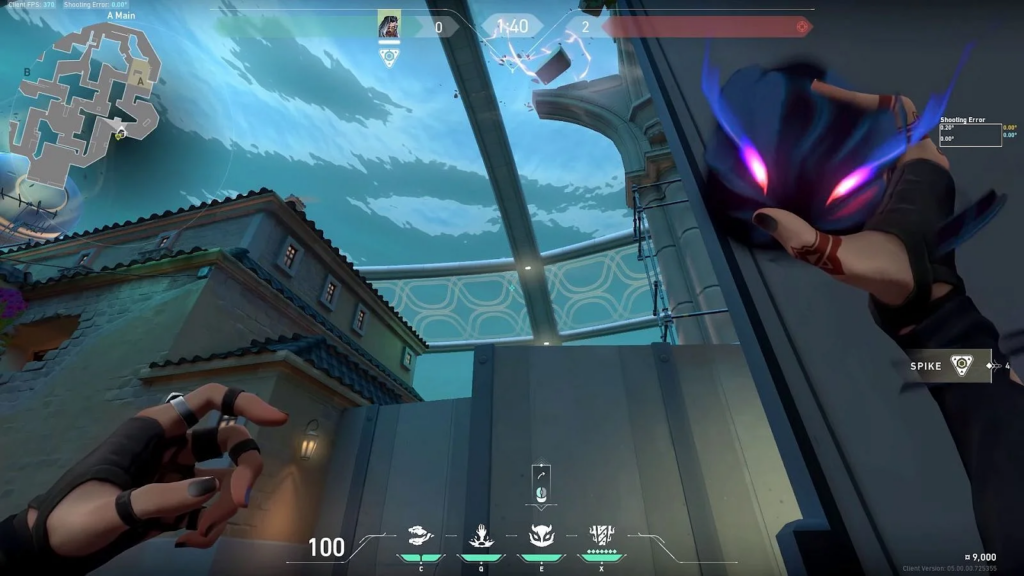
Thus concludes this article on Valorant latest badass gal, Fade! The next Agent is on their way and we can’t wait! But until then, let’s make the most of this Nightmare…
The post Valorant Fade Guide and Abilities appeared first on Mem Oriesof Mars.
]]>